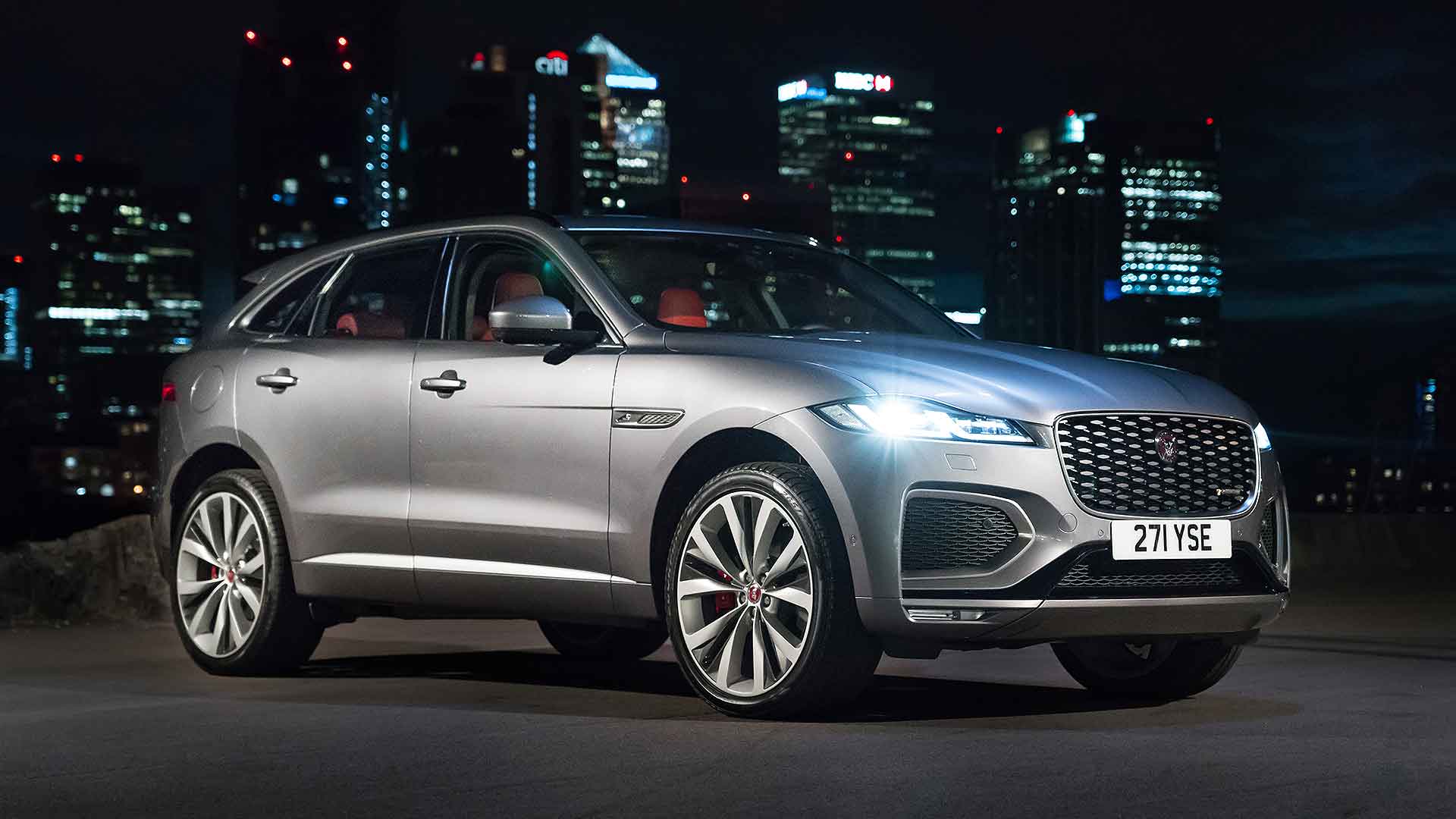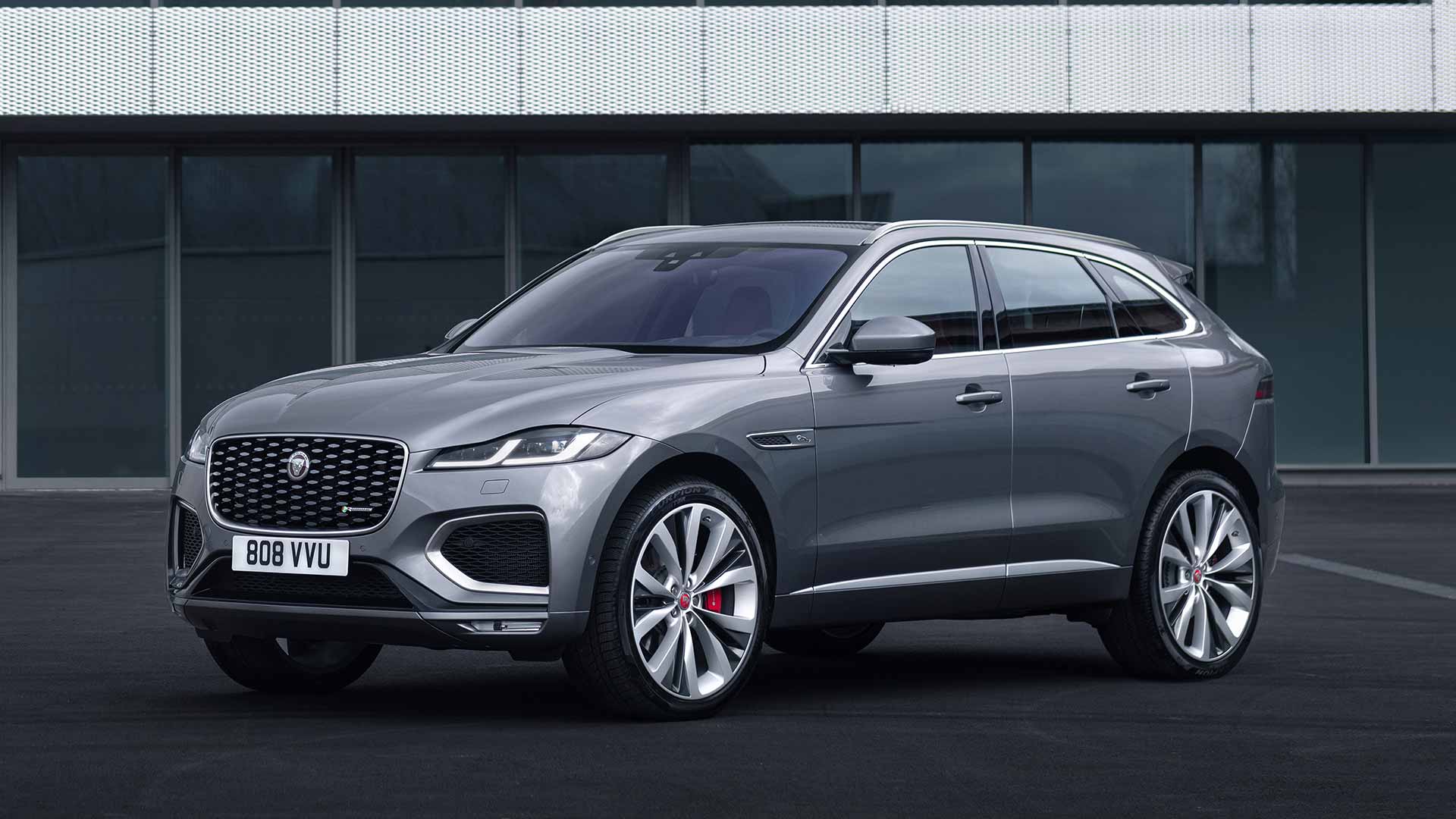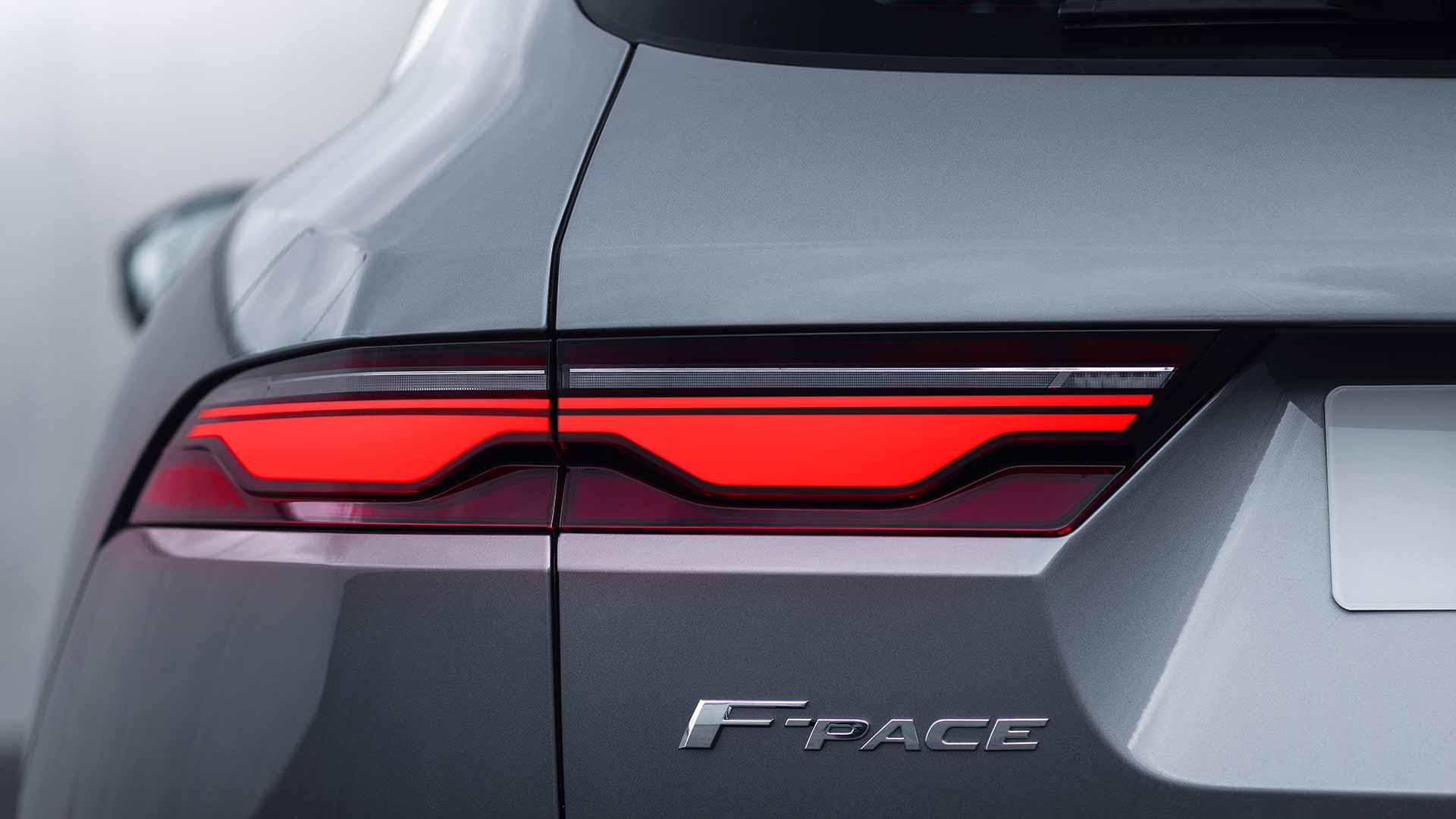- For: Performance, handling, styling
- Against: Can be expensive, ride comfort on large wheels
- Verdict: Stylish and great to drive, with a rock-solid image
The Jaguar F-Pace helped transform the image of a company formerly associated with saloons and sports cars.
Launched in 2016 and extensively facelifted in 2020, it remains one of the most dynamically sorted SUVs in an ever-growing segment, rivalling the Porsche Macan and Alfa Romeo Stelvio for handling prowess.
The entry-level model kicks off at £40,000 and is powered by a 2.0-litre turbocharged diesel engine producing 165hp. It’s fine, but we’d recommend upgrading to the D200 version, not least because this adds useful extra acceleration.
All-wheel drive is available on all but the entry-level F-Pace, with a number of trim levels offered. There’s also now a plug-in hybrid version.
The F-Pace can get expensive rather quickly, while its ride suffers on larger wheels. At launch, the cabin felt a notch or two down versus German rivals, although Jaguar has now fixed this with an all-new interior for the 2020 facelift.
Overall, for image and driver appeal, the F-Pace scores well.
KEY INFO
- Launched: 2016
- Facelifted: 2020
- Due for replacement: 2023










